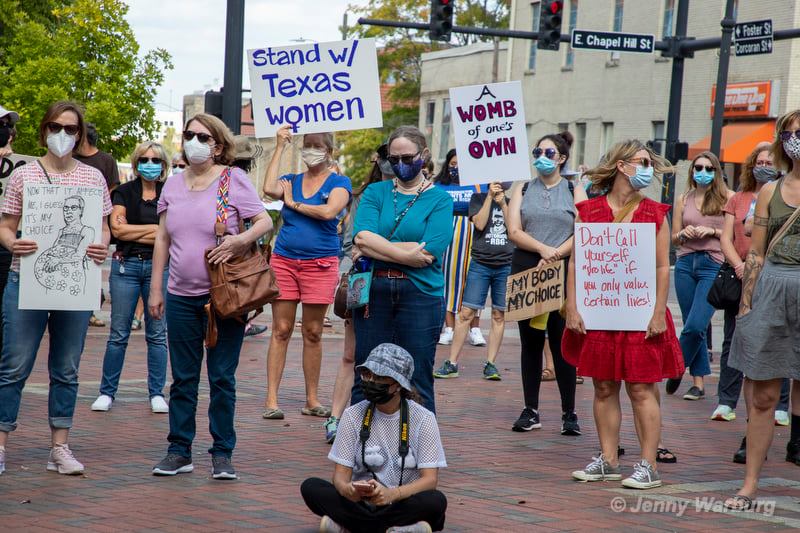Texas has a long, challenging history with providing access to sexual healthcare—but also comprehensive sex ed.

Texas gutted Roe v. Wade last month, effectively ending abortion for 7 million Texans. Using a “legal hack” that deputizes citizens from across the U.S. to report on any individual or organization assisting with an abortion, Texas has found a way around existing criterion.
The unprecedented abortion ban has received national attention, but it’s only half the story. Texas has a long and challenging history with providing access to sexual healthcare, but also comprehensive sexuality education.
States set their own standards for sexual health education curriculum and, in Texas, schools are not required to teach it. But for schools providing sexual health education, they must prioritize abstinence over pregnancy and HIV/STI prevention. They aren’t allowed to distribute condoms and must provide failure rates for contraceptives. There is no requirement to present medically accurate information.
Despite declines, the United States has the highest teen birth rate among Western industrialized countries. In 2019, Texas ranked ninth in teen pregnancy, and a recent study by Dr. Ashley Fox and colleagues suggests teen pregnancy rates in conservative states are linked to abstinence-only sexuality education.
Teen pregnancy rates in conservative states are linked to abstinence-only sexuality education.
Teen birth rates are much lower in parts of the country where comprehensive sexuality education is required. For example, California’s teen birth rate is nearly half of Texas’s, at 12.4 per 1,000. Further, more than 1.7 million women living in Texas counties that have little to no access to contraception, now have limited access to safe abortions. Clearly, we have failed young people living here.

We do not provide access to comprehensive sexuality education that would allow young people to make informed choices about sex and their bodies. Then, we take away their ability to make informed choices by limiting access to sexual healthcare services. It is a one-two punch hurting the most vulnerable Texans.
Research at the University of Georgia shows abstinence-only education has a more dramatic impact on teen birth rates among African American and Latina young women and those living in households with a lower annual income. Moreover, a study out of the University of California, San Francisco, showed women denied abortions have four times higher odds of being under the federal poverty line, are more likely to be tethered to an abusive spouse and are more likely to experience mental health issues.
We can do better. We can provide access to comprehensive sexuality education and sexual healthcare services.
Comprehensive sexuality education is about more than preventing sexually transmitted infections and pregnancy. According to The Guidelines for Comprehensive Sexuality Education 3rd Edition, published by The Sexual Information and Education Council of the United States or SIECUS, a comprehensive sexuality curriculum includes age-appropriate education on concepts such as human development, relationships, sexual behavior, sexual health, culture, society and personal skills—including topics like personal values, decision-making and communication.

Some may think teaching about sex leads to more sexual activity, but the opposite is true. A recent study by the World Health Organization shows no difference in the age of first sexual experience between countries with comprehensive sexuality education programs and those without, but they had significantly lower birth rates. (6.9 versus 18.1 per 1,000 young women aged 15–19 years, respectively.)
Similarly, access to safe legal abortions does not lead to more abortions, rather reduced morbidity. In 1965, 17 percent of pregnancy and childbirth-related deaths were due to illegal abortions. Now it is less than 1 percent. Access to sexual healthcare and education saves lives—which is why many organizations globally deem access to comprehensive sexual healthcare and education a human right.
If policymakers had been exposed to comprehensive sexuality education, they would understand why the United Nations makes clear that access to safe abortions is a human right.
If policymakers had been exposed to comprehensive sexuality education, they would understand why the United Nations makes clear that access to safe abortions is a human right. Maybe then we would have laws promoting access, rather than encouraging Texans to track down young women and take away their bodily autonomy in order to receive a bounty.
As it stands now, we have failed young people in providing access to sexual health care and education.
We must stand up to protect our young people in two ways. First, donate to Texas Equal Access Funding to ensure all women have access to safe abortions and sexual healthcare services. Second, you can always contact your State Board of Education member and tell them what you think.
Up next:





